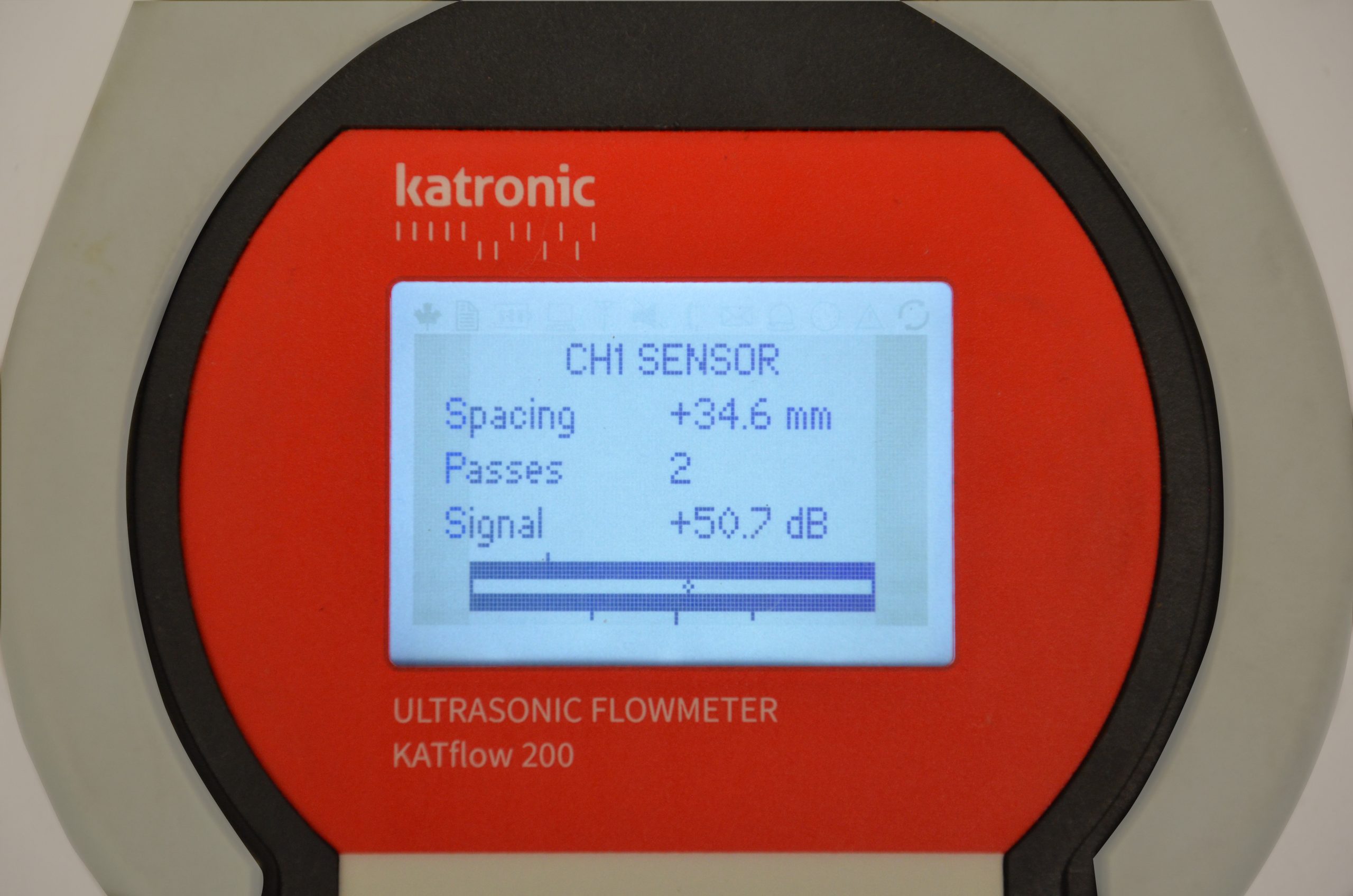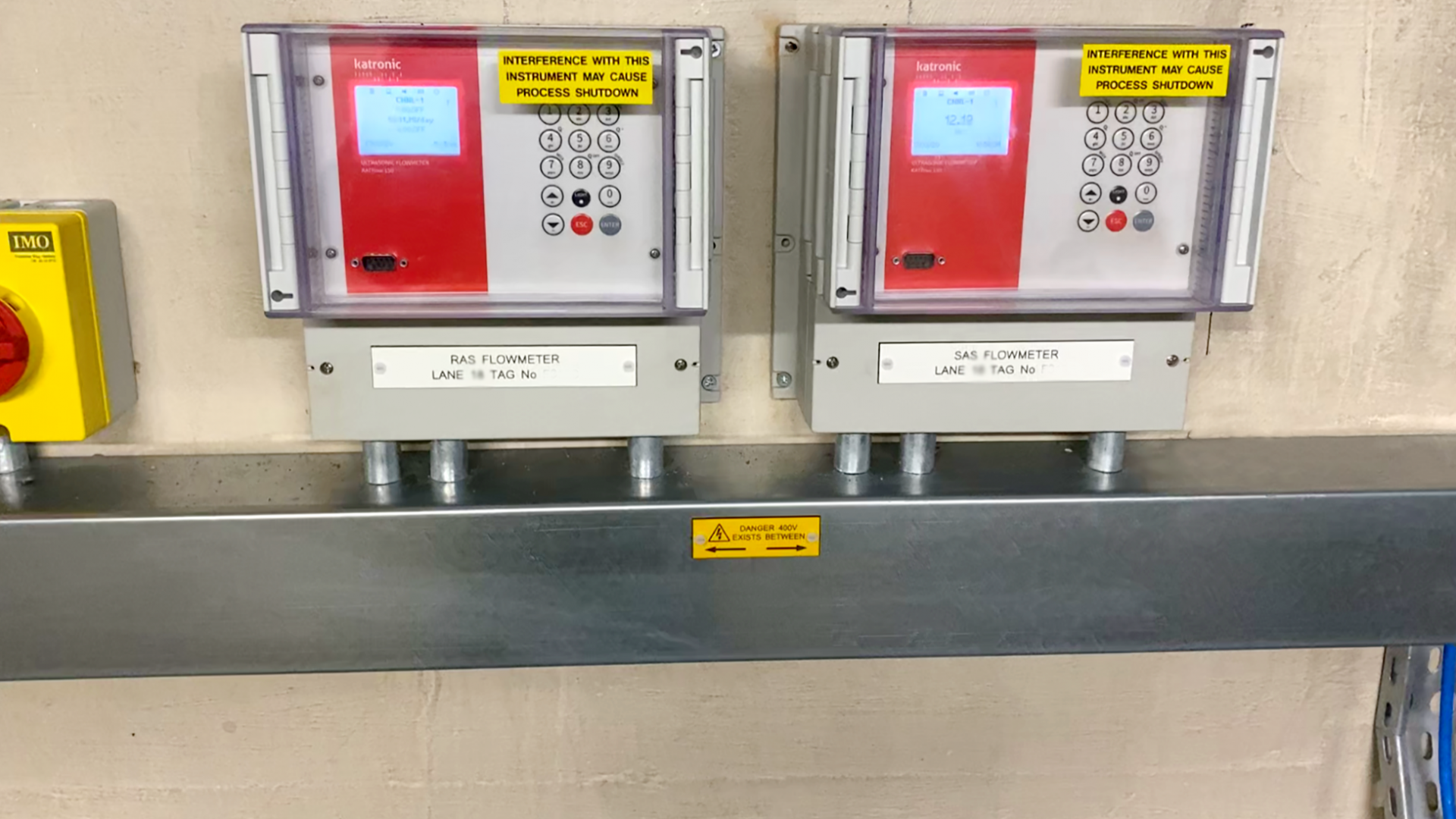As one of the biggest users of process instrumentation, the water and waste treatment industry also presents some of the biggest challenges. There are all the usual requirements – flow, level, temperature etc, but often in remote areas, or as part of a secure network, and for potable water, in hygienic conditions. It is also a critical service and the process can only be interrupted in an emergency. Katronic is an experienced and established supplier to the UK water and wastewater treatment industries, with hundreds of successful installations to our name.
Where flow measurement in filled pipes is required, operators have many options, but the fundamental technological choice lies between ‘invasive’ and ‘non-invasive’ technologies. Fundamentally, are you cutting the pipe to measure the flow? When considering the technology approach, it’s important to consider in detail the costs of making that hole! Invasive flow measurement instruments, unless installed as part of a new-build project, involve additional installation costs, for example breaking into the pipes and interrupting the process, so there may be issues possibly including having to move sewage by tanker or, on the clean water side, making other arrangements to maintain a water supply. In the wider sense, there may be a requirement for civil engineering and traffic management considerations. What about maintenance? Once you’ve made the hole in the pipe, you may need to make subsequent holes to clean biofilm or other contaminants off or to service the equipment.
A clamp-on, non-invasive flowmeter offers an alternative with some significant advantages. Firstly, non-invasive, clamp on flow measurement using ultrasonic techniques provides a method to measure reliably and repeatably without interrupting the process and without compromising the cleanliness of the pipe. The simplicity of installation means that the cost of a clamp-on meter is largely limited to the purchase cost of the meter itself and, especially as pipe diameters increase, they are cost-effective compared to magnetic flowmeters or other invasive technologies.
How does non-invasive clamp-on measurement work?
Regardless of whether the flowmeter is fixed to a wall or is a portable, battery-powered unit, flow is sensed by a pair of compact, stainless steel transducers, which are fixed to the outside of the pipe by clamps or chains. The transducers pass an ultrasonic signal through the pipe walls and the liquid. Each transducer both sends and receives the ultrasonic ‘echoes’ that reflect across the pipe, which are then analysed within the transmitter. Advanced signal analysis compares the signal in each direction and calculates the flow velocity.
Particularly on a small pipe, the difference between upstream and downstream times can be a matter of nanoseconds, so the flow meter system considers a number of reflections, or ‘passes’ to increase the confidence in the measurement. The flowmeter analyses the reflected ultrasonic pulses, taking into consideration the effect the pipe material has on the flow. A good, modern clamp-on flowmeter will include built-in tools that help to optimise the installation – Katronic’s is known as the Audible Positioning Assistant and gives an immediate and dynamic indication to the operator of the accuracy of the transducer position.
The flowmeter is making a direct measurement of flow velocity which is then converted, based on the set up of the unit, into any other flow parameter required within the process, for example cubic metres per hour. Measurable flow velocities range from 0.01 metres per second all the way up to 25 metres per second with a 100:1 turndown.

When selecting a flow measurement approach, the first question should always be ‘what are we trying to achieve?’. A clamp-on flowmeter offers a typical accuracy of ±2% of flow velocity with repeatability of around 0.15%, although this figure is dependent on commissioning. There may be critical measurements where the operator will have to accept the inconvenience and cost of an invasive approach. For the majority of applications within a process environment, however, a couple of percent accuracy is adequate.
Typical water/wastewater applications
As long as we are trying to measure flow in a filled pipe, almost all measurements encountered in the water and wastewater industries can be successfully measured. Here are just a few examples of recent projects undertaken by Katronic.
Pump performance monitoring
Clamp-on flowmeters are available in both fixed and portable forms, portable versions providing opportunities for temporary process monitoring, for example to verify pump performance, allowing service and maintenance to become predictive and management of the assets to be more effective. Some pumps will have run for many hours, others for far less, and the wear on the pumps may have been affected by the process conditions when they were on duty. With a simple clamp-on measurement, individual pump performance can be determined directly, so maintenance priorities can be decided on the basis of actual repair and service requirements rather than time.
Fixed flowmeter verification
Verification is a common theme, and it is surely good practice that any fixed flowmeter be checked regularly for accuracy using a secondary meter, and a non-invasive technique makes that process simple. At Katronic, we have made life easier for the user with the introduction of an audible positioning assistant that helps make sure that transducers are positioned precisely, and a variety of easy-fix clamping options so that mounting and removal of the transducers takes a matter of moments.
Digester sludge flow measurement
Although the majority of use in the water industries involves the measurement of water/wastewater, other fluids are also monitored. Increasingly, monitoring organisations require the flow from digesters to sewage treatment plant inlet works to be measured. Although, typically, magnetic flowmeters will be installed as part of the original equipment, they need to be verified annually, so a portable, battery powered clamp-on flowmeter is an ideal solution, and Katronic equipment such as the hand-held KATflow 200 has proven reliable and accurate, even when measuring a relatively viscous sludge with intermittent flow.
Network improvement survey delivering significant cost benefits
Network surveys can be undertaken using clamp-on systems with extended battery life, such as Katronic’s KATflow 210. In a recent example, a network survey was undertaken over several weeks to test whether a reduction in pipeline bore would affect flushing efficiency, and whether that bore reduction would lead to the flow breaching velocity limits. By using a clamp-on meter with long-life, rechargeable lithium batteries and weather-proof enclosure, the engineers showed that the flow, even at peak times, would remain within velocity limits, and successful flushing operations increased from 26% to 86%, significantly reducing water usage. A six-figure saving was projected, by reducing leakage losses and because the smaller bore pipework can be pulled through the existing pipes, avoiding the need for expensive and time-consuming earthworks.
Comparison of influent flows
Increasingly, and to aid long-term planning as well as immediate treatment works performance, measurement is required for both dry weather influent and also ‘passed forward’ storm flows. Even for works that are serving relatively small populations, the pipework involved can be wide-bore and accessible only via relatively small pits. The amount of civil engineering involved in installing a fixed meter such as a magnetic flow meter would be difficult and the cost would be prohibitive. A clamp-on meter, ideally one that can simultaneously measure and log two separate flows, provides a perfect solution. Flow in pipes up to 6,500 mm diameter and of virtually any material can be successfully measured.
Heat metering
Higher specification clamp-on flowmeters are able to accept a second pair of transducers, along with a pair of temperature sensors. Flow and temperature measurements can therefore be integrated to directly measure heat flow. By comparing heat flow ‘in’ with heat flow ‘out’, energy usage can be directly measured, logged and tracked to identify opportunities for energy savings.
Clamp-on, non-invasive ultrasonic flowmeters are clean, easy to install and use, and versatile. Water 4.0 and Industrial Internet of Things (IIoT) technologies means that process instrumentation that can be easily incorporated into an existing process is becoming more and more essential. The clamp-on flowmeter is set to be an important part of that growth.



